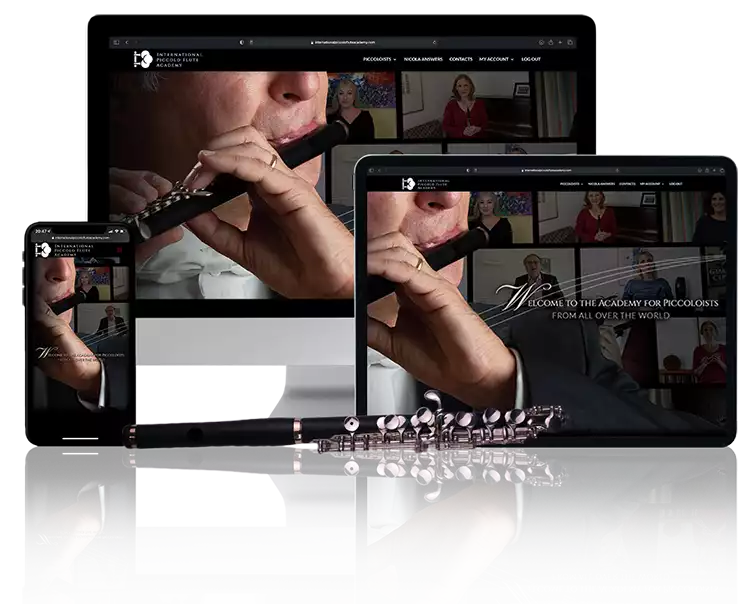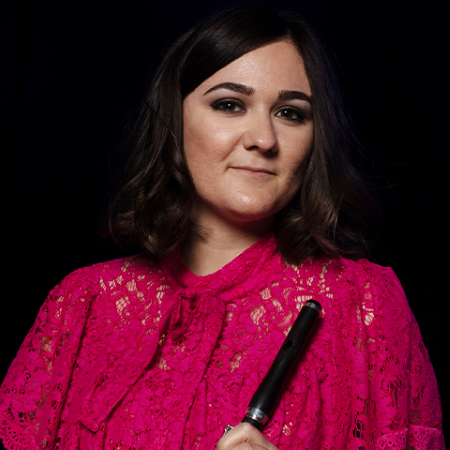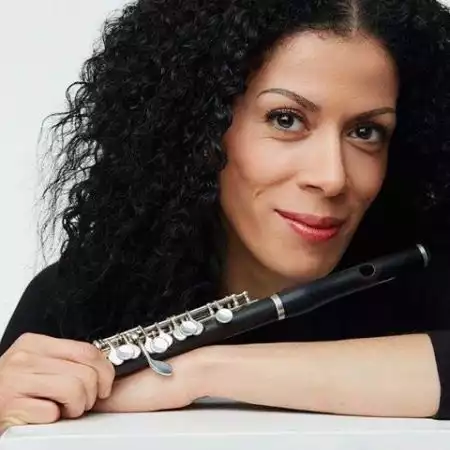Body Mapping
for the piccolo player
What you will learn in this course:
- How to get coordination and balance while playing the piccolo
- How to move your arms correctly
- How to get more freedom and ease in our articulation
- How to recognize over engagements of muscles
- How to find the best sitting position
- How to allow your neck muscles to be free
- How to prevent wrist pain
- How to find balance in the handle of the piccolo

What you will learn in this course:
- How to get coordination and balance while playing the piccolo
- How to move your arms correctly
- How to get more freedom and ease in our articulation
- How to recognize over engagements of muscles
- How to find the best sitting position
- How to allow your neck muscles to be free
- How to prevent wrist pain
- How to find balance in the handle of the piccolo
Lessons of this course:


What you will learn:
- What are body maps
- The six places of balance
- Why the AO joint is crucial for piccolo players
- How to allow your neck muscles to be free
- How to move your arms correctly
- The tendency to make ourselves small
- The results you will get working on your body maps
- An exercise to recognize over engagements of muscles
- How to find the best sitting position


What you will learn:
- Body Mapping to get more freedom and ease in our articulation
- The hyoid bone
- The homohyoid muscles
- How to get a more freer, crisp, sparkly articulation


What you will learn:
- Arm structure anatomy
- Rotation and flex joints: why do piccolo players have wrist pain?
- An exercise to expand your space
- How to get a floating arm structure
- An exercise with the physio ball


What you will learn:
- 4 exercises
- The latissimus dorsi
- How to budget your practice time


What you will learn:
- Hand anatomy
- The texting thumb
- The importance of the thumbs for a piccolo player
- The wrist joint
- How to find balance in the handle of the piccolo
- The carpal bones
- How to map your hands correctly
- The muscles of the hand and of the forearm
- Coordination and balance while playing the piccolo
- An exercise if you're working your way back into playing
Other courses:


You will find new lessons every month
All the lessons are subtitled in English
30 days money back guarantee
What our members say about us

Elena
Winner of
Gazzelloni Competition Cat. Piccolo
The Academy is an amazing project conceived by Nicola Mazzanti and supported by amazing teachers and musicians; in a world where technology permeates and sustains learning, the Academy gives young students and also professionals the chance to deepen the instrument’s pratice following the precious advices of the world-wide most renowned piccolists, reducing the often remarkable distance’s barriers.
I personally thank Nicola and all the professors involved in the Academy and I highly recommend the subscription to whoever wants to increase skills and awareness about the piccolo.”

Zuzana
Piccoloist of the
State Theatre orchestra
in Košice, Slovakia

Ksenia
A piccolo player
of the Saint-Petersburg
Philharmonic Symphony
Orchestra
Thanks to the academy’s professors for your experience and knowledge!”

Lucas
Master’s Degree Student
in Music Performance
Zurich University of Arts
The content of the Academy is 100% rewarding!”

Ugné
Piccoloist at the
State Musical Theatre orchestra
in Klaipėda, Lithuania
The online courses combine a wide variety of topics: from playing technique to human and instrument anatomy. Prominent piccolo artists give inspiration with their individual approaches to improving one’s performance. IPFA gives me the feeling of a creative community that helps each member grow, flourish, and contribute in their own way to the today and tomorrow of piccolo music.”

Zuzana
Piccoloist of the
State Theatre orchestra
in Košice, Slovakia
“Hello, my name is Zuzana, and I have been a subscriber to IPFA since its beginning. The incredible lessons we are given are full with information, useful tips and tricks to play at our best level. I am eternally grateful for the inspiration all of the artists give us, and I highly recommend this platform to anyone who wants to attain deeper knowledge and proficiency on their instrument.”

Ksenia
A piccolo player
of the Saint-Petersburg
Philharmonic Symphony
Orchestra
“Hello, my name is Ksenia Kuelyar, and I want to thank Nicola Mazzanti for the wonderful Piccolo Academy he inspired the creation of, this is a great opportunity for me and my students to improve our playing and skills, to learn a lot of new things.
Thanks to the academy’s professors for your experience and knowledge!”

Lucas
Master’s Degree Student
in Music Performance
Zurich University of Arts
“I have been subscribed to the IPFA for the past 3 months and it has been extremely enriching! Learning from the most prominent piccolo teachers from today is a great deal for students like me who also pursue a piccolo job position.
The content of the Academy is 100% rewarding!”

Ugné
Piccoloist at the
State Musical Theatre orchestra
in Klaipėda, Lithuania
“Having completed my academic studies and begun my professional career, I find IPFA to be an unparalleled tool for learning and delving into piccolo speciality.
The online courses combine a wide variety of topics: from playing technique to human and instrument anatomy. Prominent piccolo artists give inspiration with their individual approaches to improving one’s performance. IPFA gives me the feeling of a creative community that helps each member grow, flourish, and contribute in their own way to the today and tomorrow of piccolo music.”

Elena
Winner of
Gazzelloni Competition Cat. Piccolo
“Hello, I’m Elena and I have been subscribed to the IPFA right from the beginning.
The Academy is an amazing project conceived by Nicola Mazzanti and supported by amazing teachers and musicians; in a world where technology permeates and sustains learning, the Academy gives young students and also professionals the chance to deepen the instrument’s pratice following the precious advices of the world-wide most renowned piccolists, reducing the often remarkable distance’s barriers.
I personally thank Nicola and all the professors involved in the Academy and I highly recommend the subscription to whoever wants to increase skills and awareness about the piccolo.”
Frequently Asked Questions




























